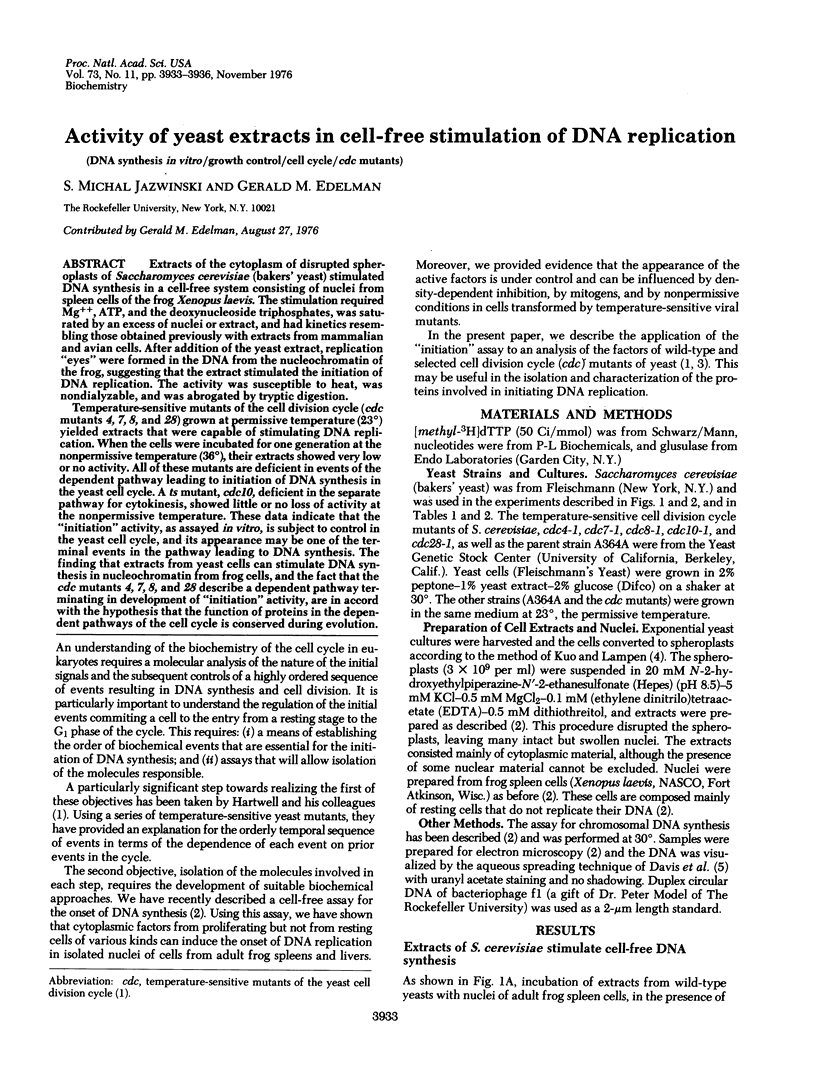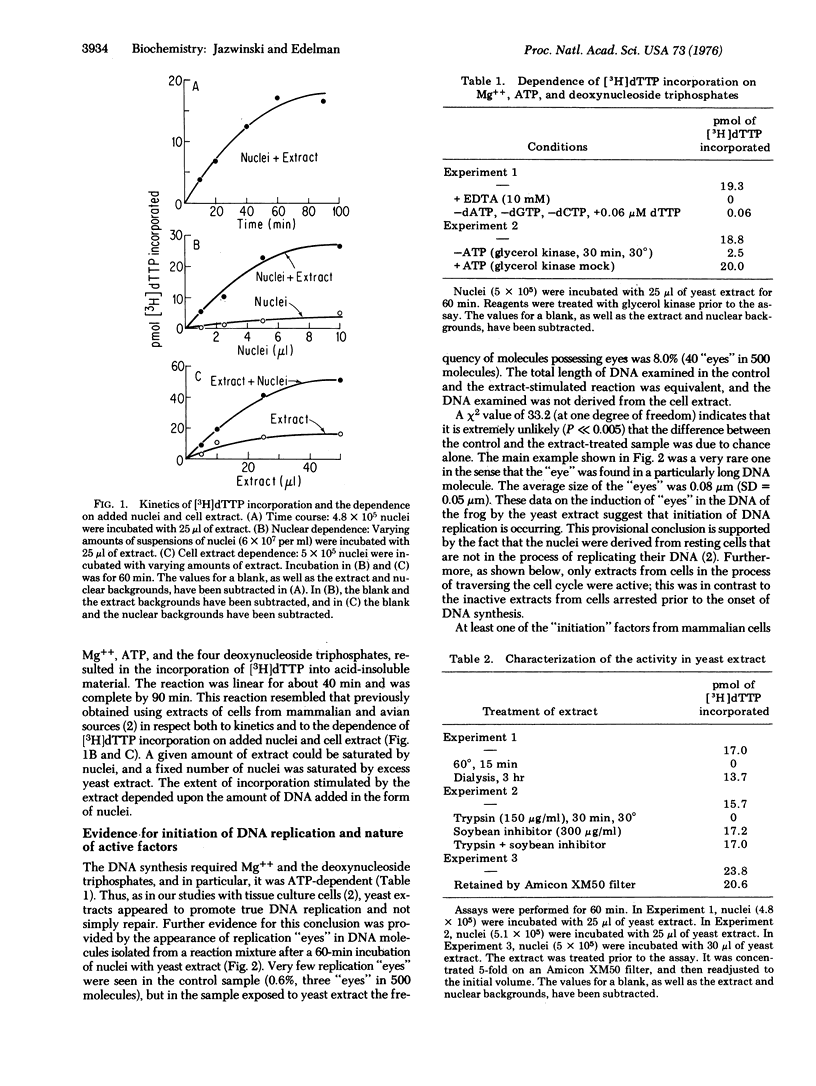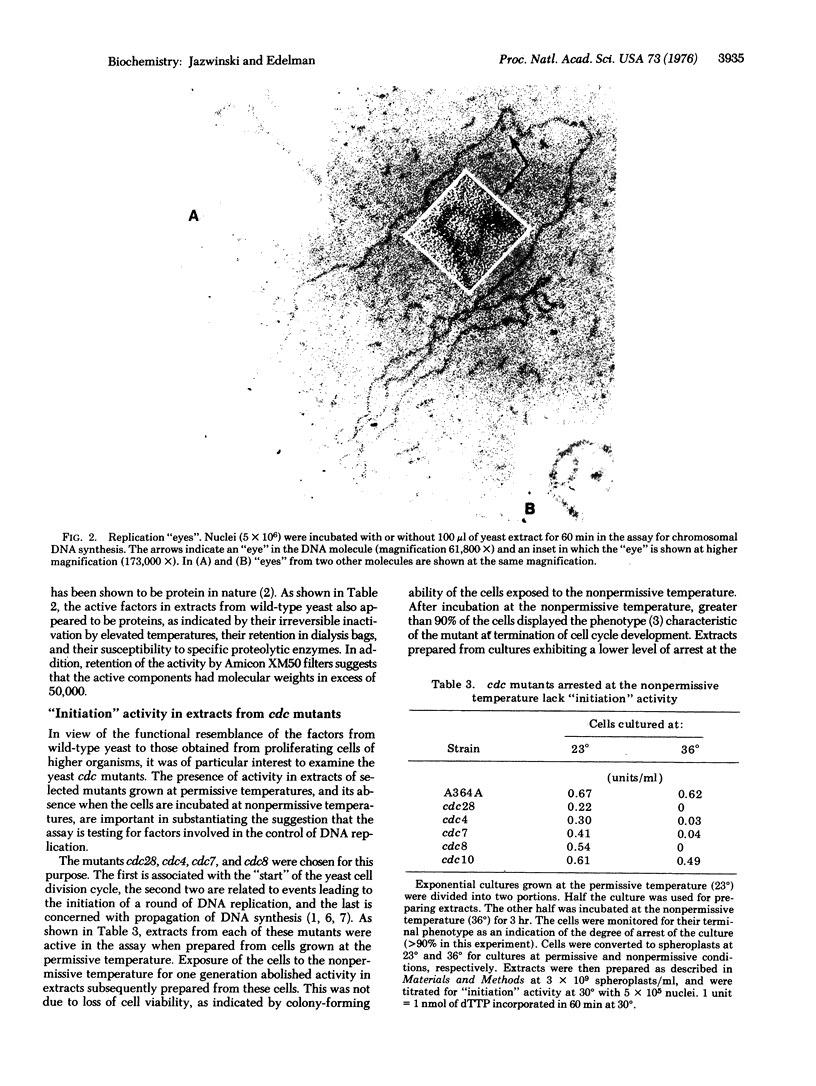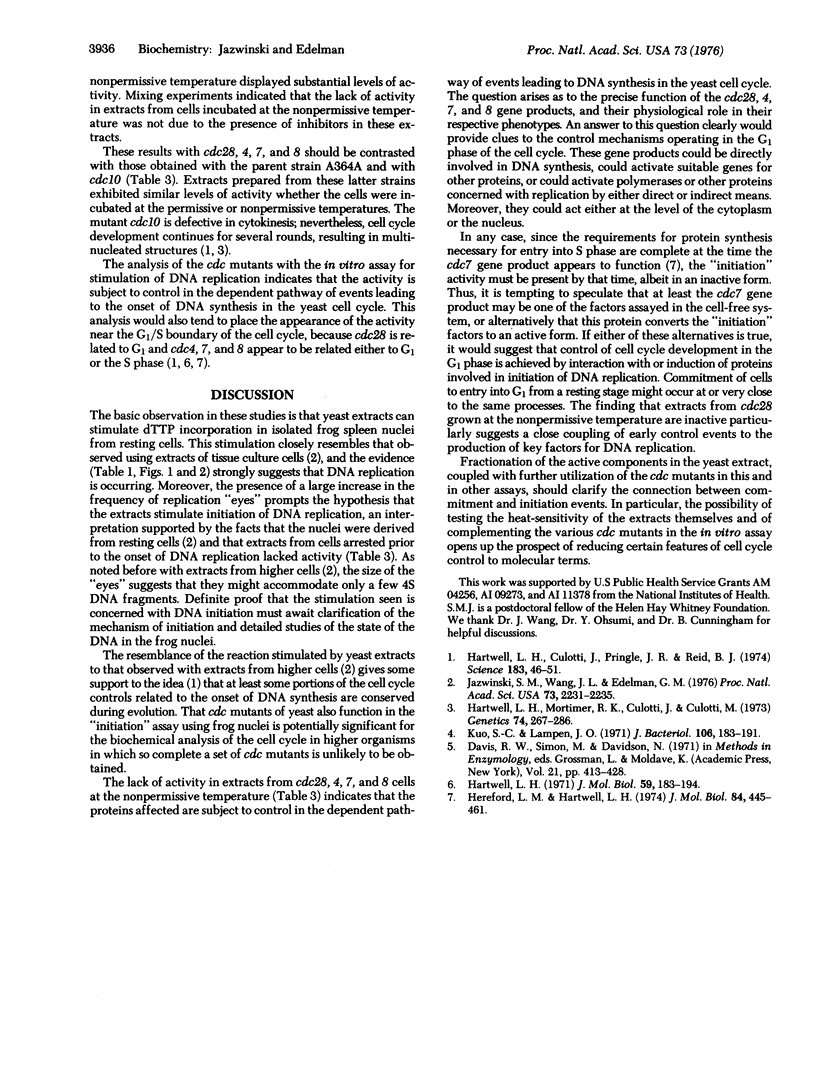Abstract
Extracts of the cytoplasm of disrupted spheroplasts of Saccharomyces cerevisiae (bakers' yeast) stimulated DNA synthesis in a cell-free system consisting of nuclei from spleen cells of the frog Xenopus laevis, The stimulation required Mg++8 ATP, and the deoxynucleoside triphosphates, was saturated by an excess of nuclei or extract, and had kinetics resembling those obtained previously with extracts from mammalian and avian cells. After addition of the yeast extract, replication "eyes" were formed in the DNA from the nucleochromatin of the frog, suggesting that the extract stimulated the initiation of DNA replication. The activity was susceptible to heat, was nondialyzable, and was abrogated by tryptic digestion. Temperature-sensitive mutants of the cell division cycle (cdcmutants 4,7,8, and 28) grown at permissive temperature (23 degrees) yielded extracts that were capable of stimulating DNA replication. When the cells were incubated for one generation at the nonpermissive temperature (36 degrees), their extracts showed very low or no activity. All of these mutants are deficient in events of the dependent pathway leading to initiation of DNA synthesis in the yeast cell cycle. A ts mutant, cdc10, deficient in the separate pathway for cytokinesis, showed little or no loss of activity at the nonpermissive temperature. These data indicate that the "initiation" activity, as assayed in vitro, is subject to control in the yeast cell cycle, and its appearance may be one of the terminal events in the pathway leading to DNA synthesis. The finding that extracts from yeast cells can stimulate DNA synthesis in nucleochromatin from frog cells, and the fact that the cdc mutants 4,7,8, and 28 describe a dependent pathway terminating in development of "initiation" activity, are in accord with the hypothesis that the function of proteins in the dependent pathways of the cell cycle is conserved during evolution.
Full text
PDF



Images in this article
Selected References
These references are in PubMed. This may not be the complete list of references from this article.
- Hartwell L. H., Culotti J., Pringle J. R., Reid B. J. Genetic control of the cell division cycle in yeast. Science. 1974 Jan 11;183(4120):46–51. doi: 10.1126/science.183.4120.46. [DOI] [PubMed] [Google Scholar]
- Hartwell L. H. Genetic control of the cell division cycle in yeast. II. Genes controlling DNA replication and its initiation. J Mol Biol. 1971 Jul 14;59(1):183–194. doi: 10.1016/0022-2836(71)90420-7. [DOI] [PubMed] [Google Scholar]
- Hartwell L. H., Mortimer R. K., Culotti J., Culotti M. Genetic Control of the Cell Division Cycle in Yeast: V. Genetic Analysis of cdc Mutants. Genetics. 1973 Jun;74(2):267–286. doi: 10.1093/genetics/74.2.267. [DOI] [PMC free article] [PubMed] [Google Scholar]
- Hereford L. M., Hartwell L. H. Sequential gene function in the initiation of Saccharomyces cerevisiae DNA synthesis. J Mol Biol. 1974 Apr 15;84(3):445–461. doi: 10.1016/0022-2836(74)90451-3. [DOI] [PubMed] [Google Scholar]
- Jazwinski S. M., Wang J. L., Edelman G. M. Initiation of replication in chromosomal DNA induced by extracts from proliferating cells. Proc Natl Acad Sci U S A. 1976 Jul;73(7):2231–2235. doi: 10.1073/pnas.73.7.2231. [DOI] [PMC free article] [PubMed] [Google Scholar]
- Kuo S. C., Lampen J. O. Osmotic regulation of invertase formation and secretion by protoplasts of Saccharomyces. J Bacteriol. 1971 Apr;106(1):183–191. doi: 10.1128/jb.106.1.183-191.1971. [DOI] [PMC free article] [PubMed] [Google Scholar]



